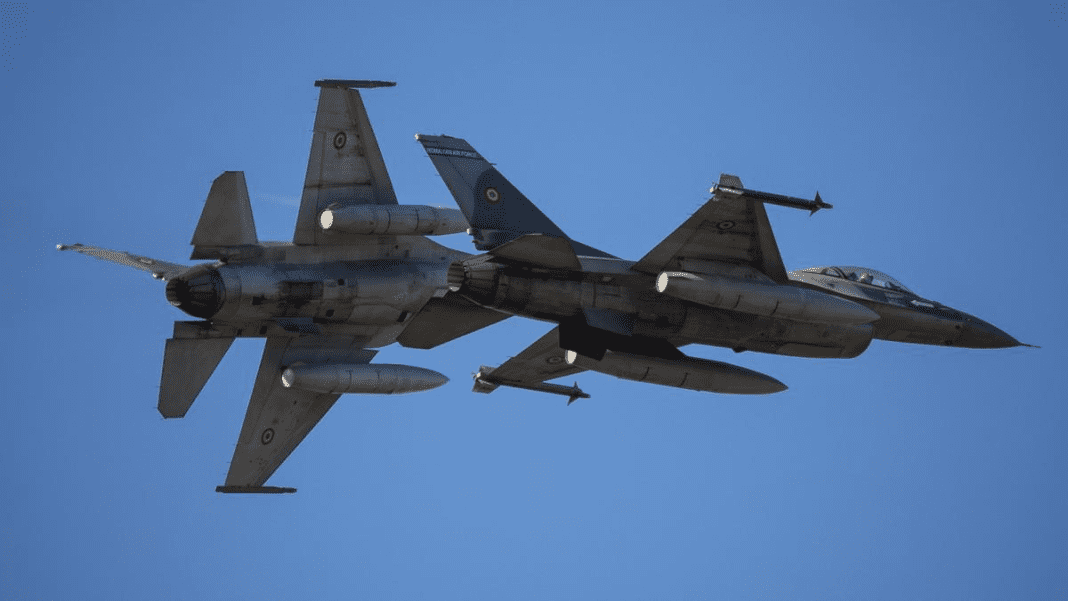A dramatic and tense moment unfolded during the night of November 19 when a Russian drone crossed into Romanian Airspace, triggering an immediate and urgent response from NATO forces. The incident happened while Russian forces carried out a heavy combined attack on Ukraine, striking several regions and causing major destruction.
Russian Drone Intrudes Into Romanian Airspace During Night Attack
Romania’s Ministry of National Defense said radar teams detected the drone shortly after midnight, just minutes after authorities sent out a Ro-Alert warning. The signal came from Vylkove and moved toward Kiliia, flying about 8 kilometers inside Romanian Airspace before it disappeared.
Two Eurofighter Typhoons from the Mihail Kogălniceanu base took off at 00:25, and Romanian F-16 jets from Câmpia Turzii launched to secure the area. Their swift response showed that authorities treat even small intrusions into Romanian Airspace very seriously.
Close Call Near NATO Border — Russian Strike Sets Turkish LPG Ship Ablaze, Romania Orders Evacuation
The drone stayed on radar for about 12 minutes. Once officials declared the airspace safe, the Eurofighters landed at 01:50, and the F-16s returned around 02:30. Ground teams are preparing to search for any drone debris to determine its type and possible threat.
The incident mirrors earlier cases in nearby countries, including Poland, which also scrambled aircraft in response to Russian attacks on western Ukraine. Rapid reactions like this are becoming more common as strikes happen close to NATO borders.
Wider Attacks Hit Ukraine as Romanian Airspace Breach Raises Concerns
While Romania handled the breach of Romanian Airspace, Ukraine faced a severe night of attacks. Russian forces launched several waves of drones and missiles at multiple regions, hitting buildings, energy sites, and public services.
In Ternopil, tall apartment blocks were damaged or partly destroyed, and rescue teams worked through the night to help residents and search for anyone trapped.
Romania on edge as U.S. sanctions threaten to freeze Lukoil’s fuel lifeline
The Ivano-Frankivsk region saw strikes on energy infrastructure, causing injuries and sparking a fire that crews worked quickly to contain.
Explosions were also reported in the Lviv region, where another energy facility was damaged and caught fire.
The combination of widespread attacks in Ukraine and the drone entering Romanian Airspace raised concerns across the region. Even though Romania is not part of the conflict, incidents like this highlight how quickly violence near borders can spread and why NATO forces remain on high alert.
Kharkiv Suffers Major Damage During Overnight Assault
In addition to the intrusion into Romanian Airspace, one of the most heavily affected Ukrainian cities during the night was Kharkiv. By early morning, officials reported that explosions injured at least 46 people. The strikes caused severe and widespread damage, hitting both residential and public buildings.
The attacks damaged sixteen multi-story buildings, leaving many families with unsafe or unlivable homes. They also hit a school and an ambulance station, which made it harder for emergency workers to respond quickly and help those in need. Several other local facilities suffered damage, showing how broadly the assault affected the city.
NATO’s drone wall begins — Poland and Romania deploy Merops to hunt Russian intruders
One of the most striking scenes came from Kharkiv, where a blast completely destroyed a supermarket. The explosion left only charred remains and collapsed sections of the structure. Local workers and volunteers began clearing debris early in the morning as they tried to restore some normalcy amid the chaos.
Kharkiv has faced repeated strikes throughout the conflict because it lies close to the Russian border. Each new attack adds more damage to neighborhoods, more injuries to civilians, and more challenges for rescue teams. The events of the night show how the conflict continues to affect daily life in multiple regions, even as neighboring countries such as Romania must respond to sudden violations like the drone that entered Romanian Airspace.

